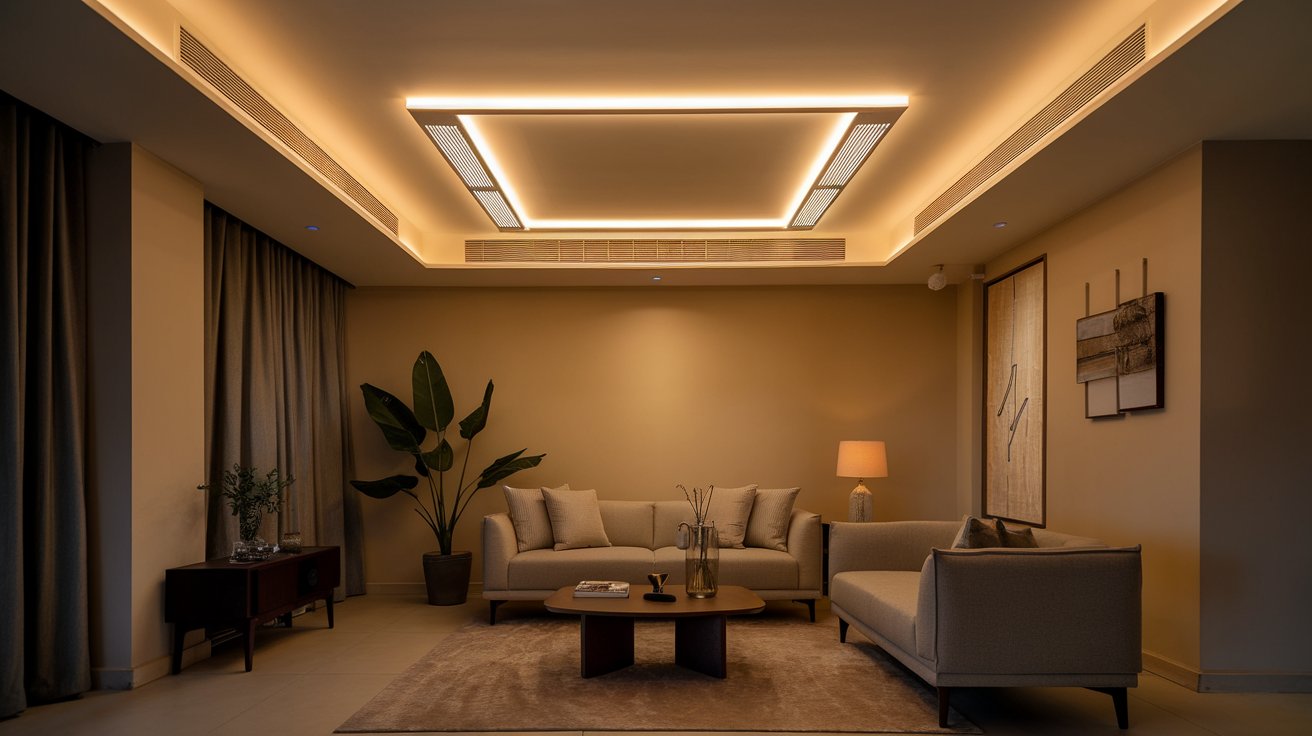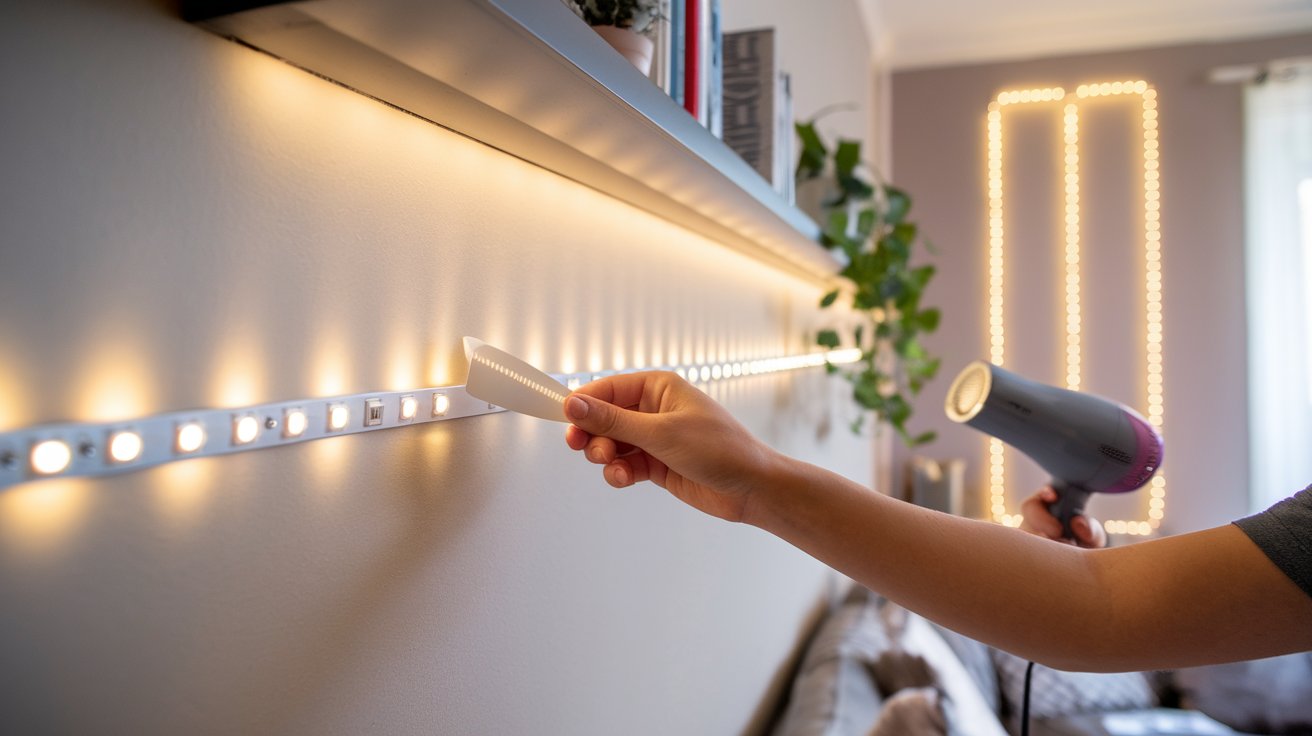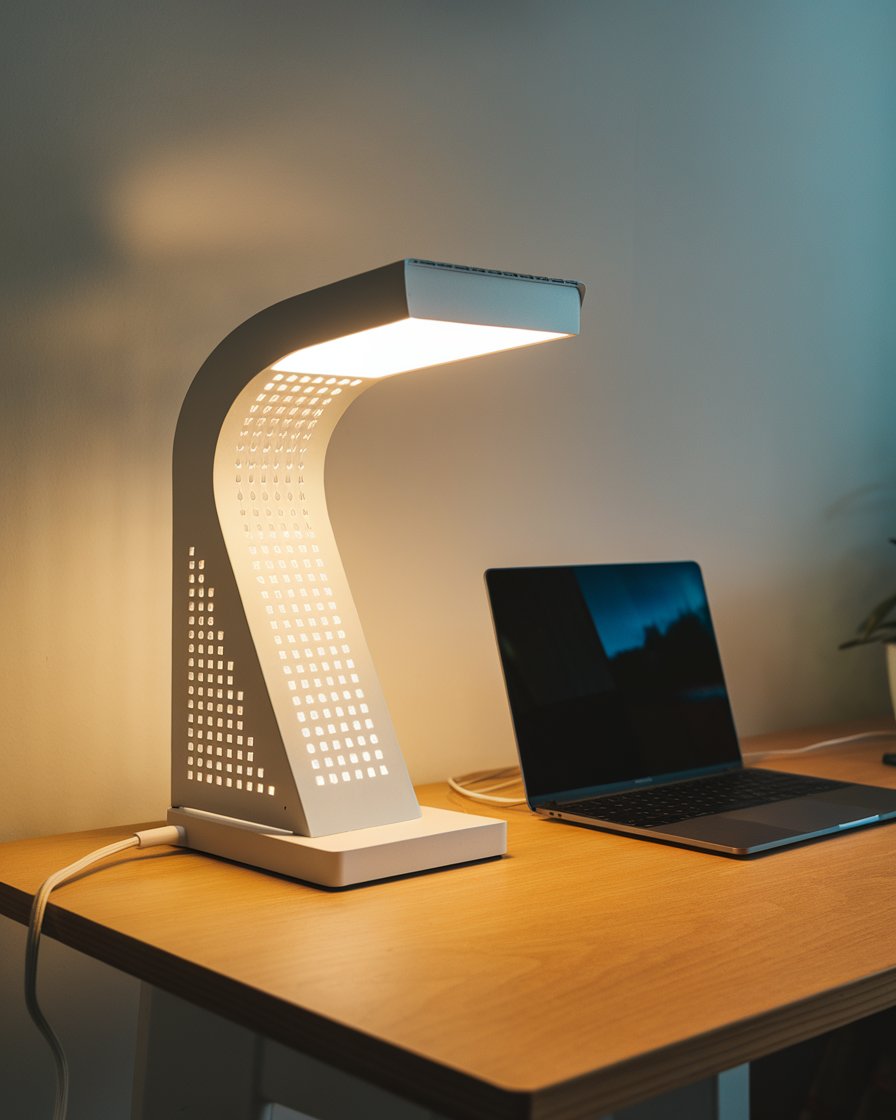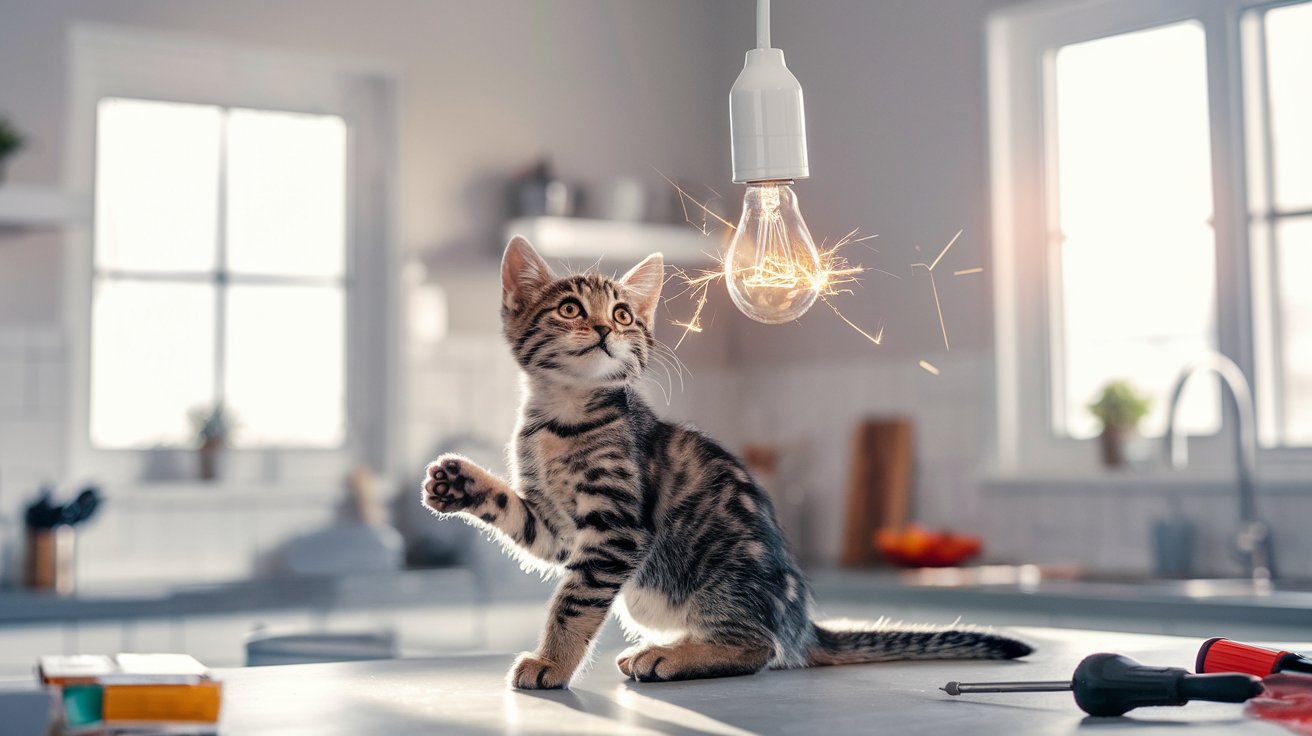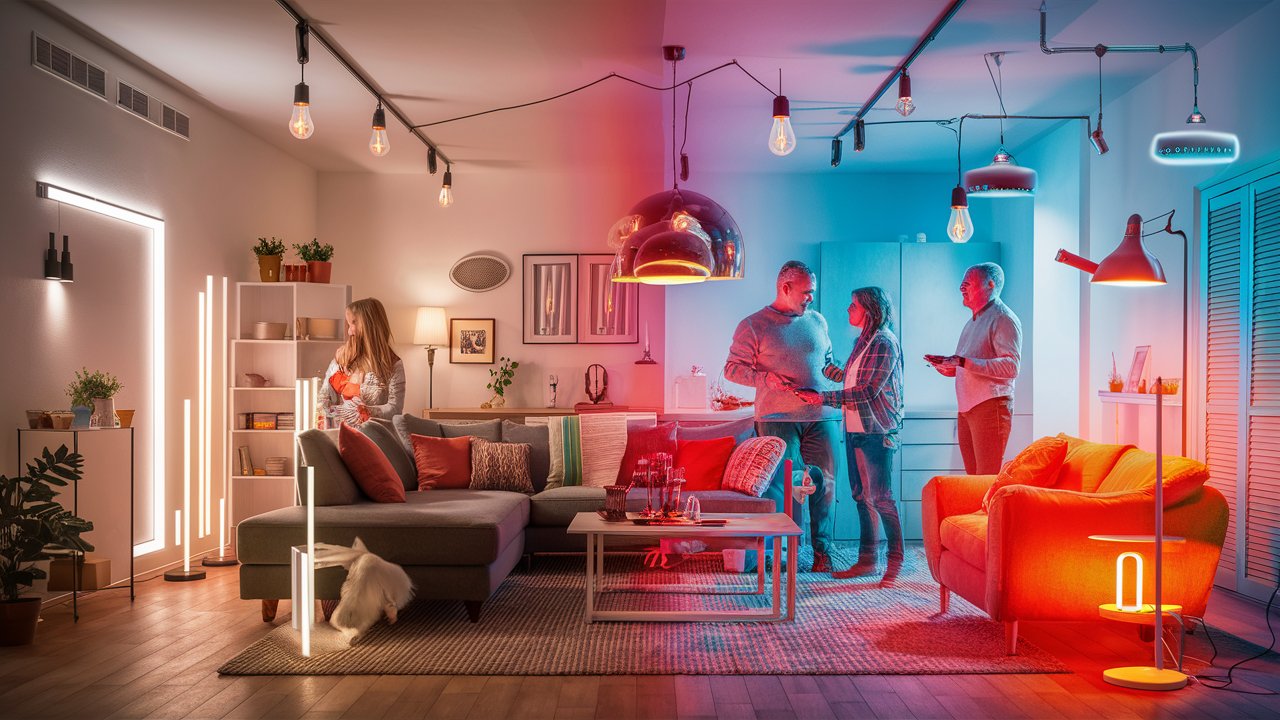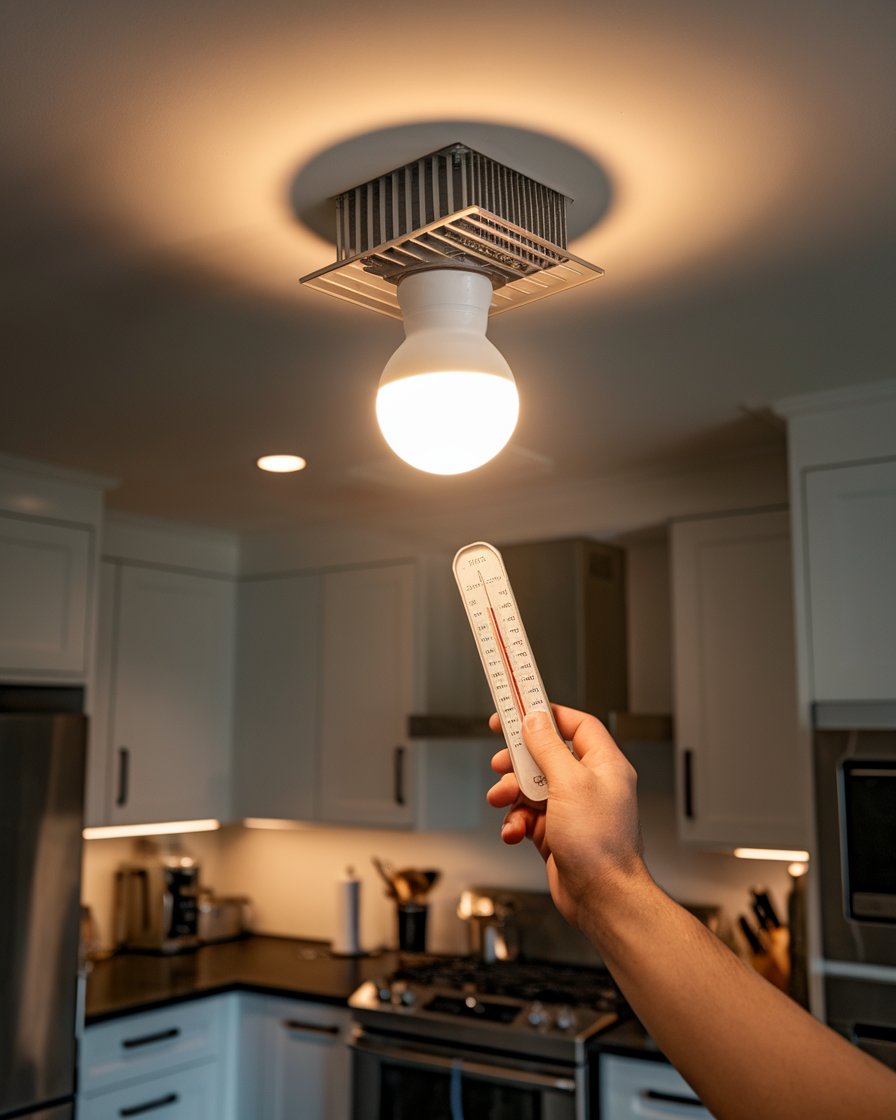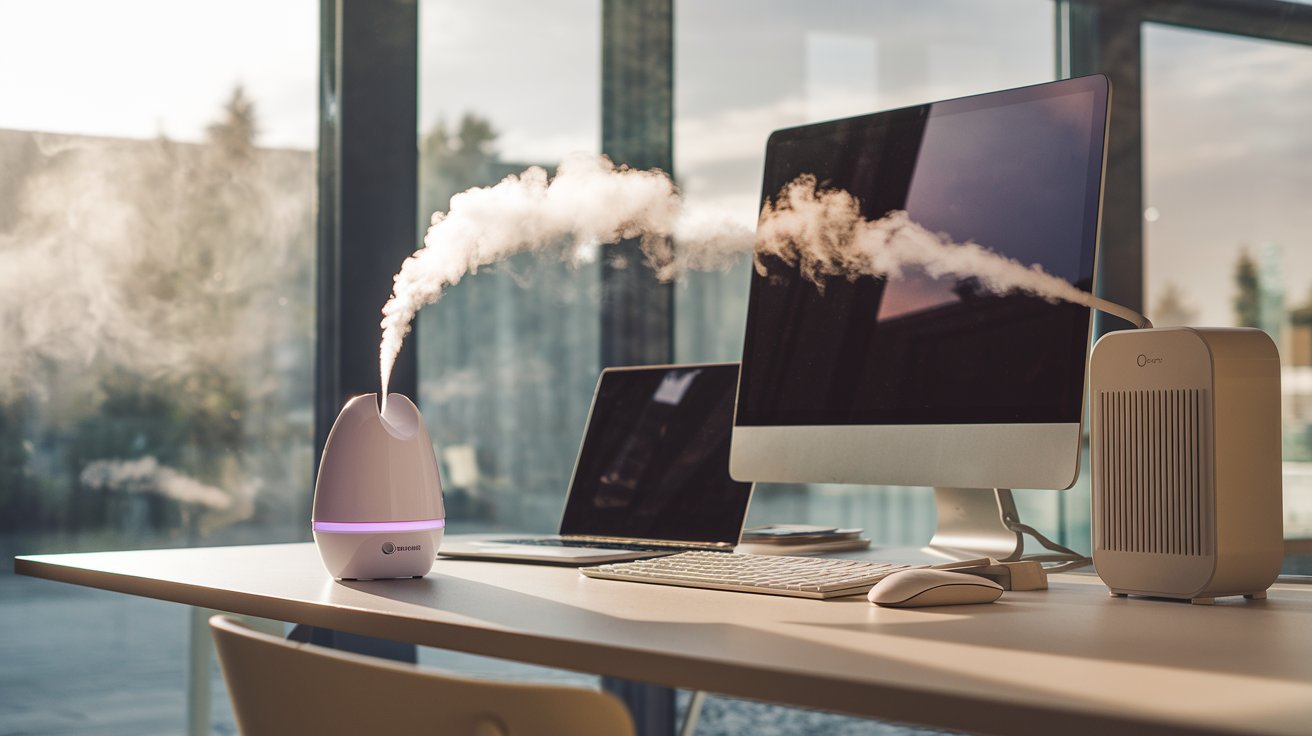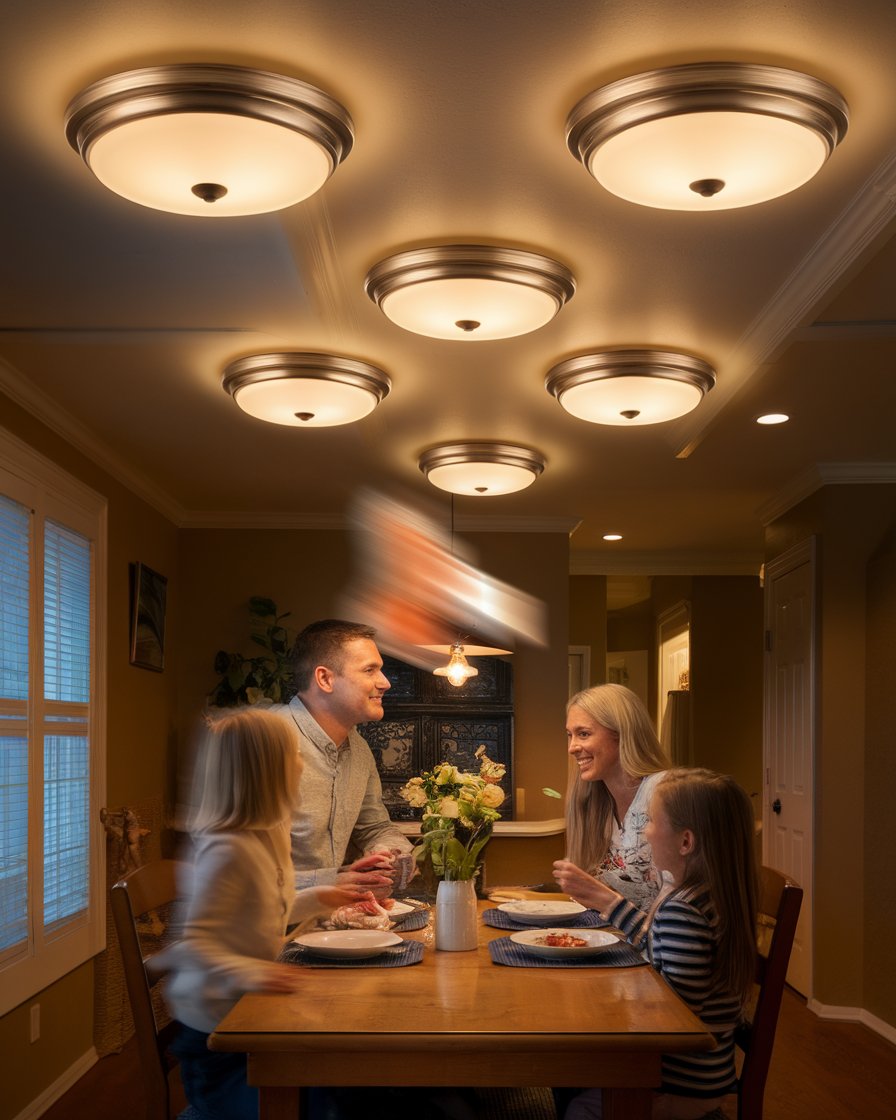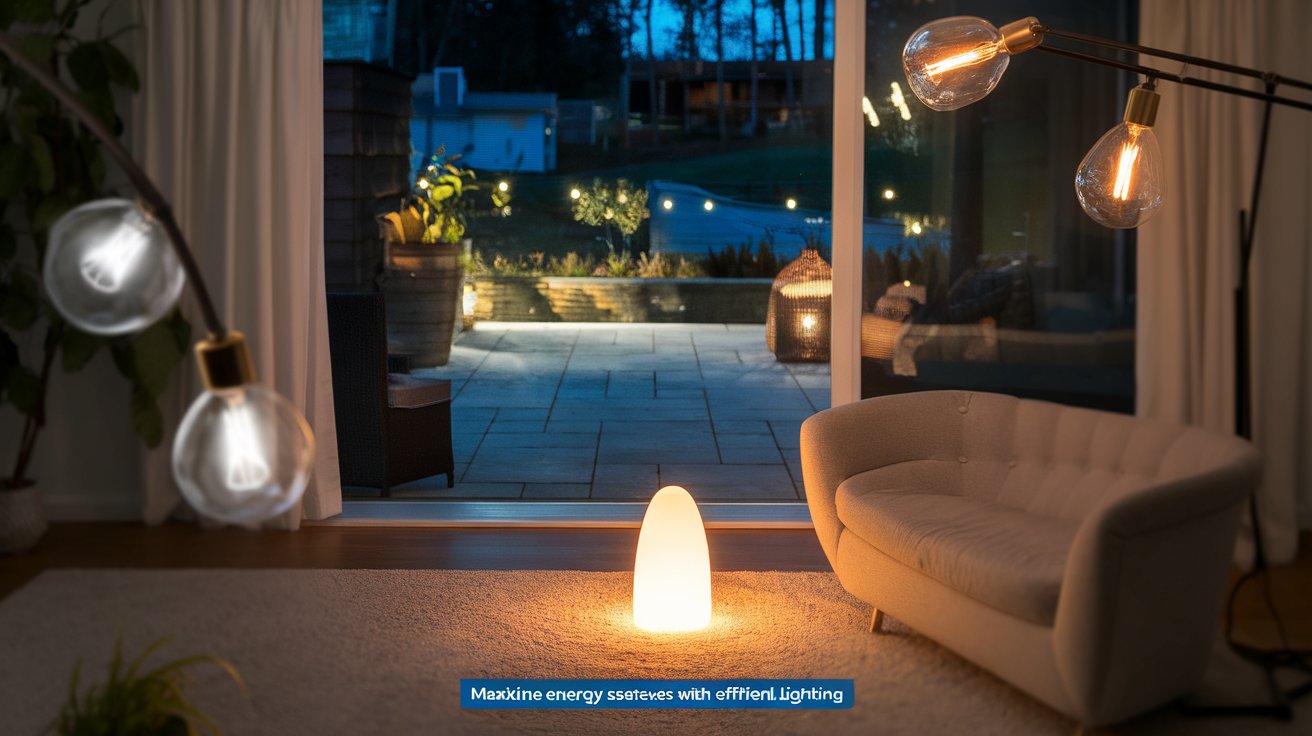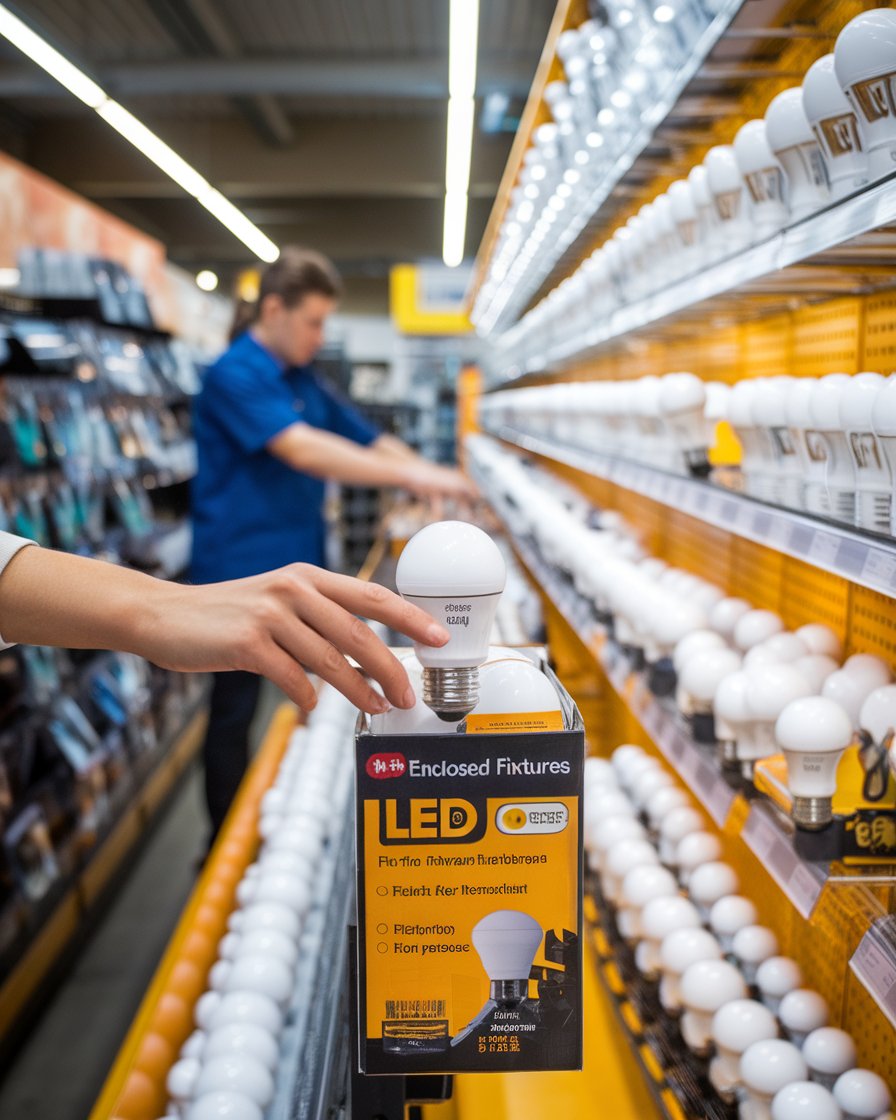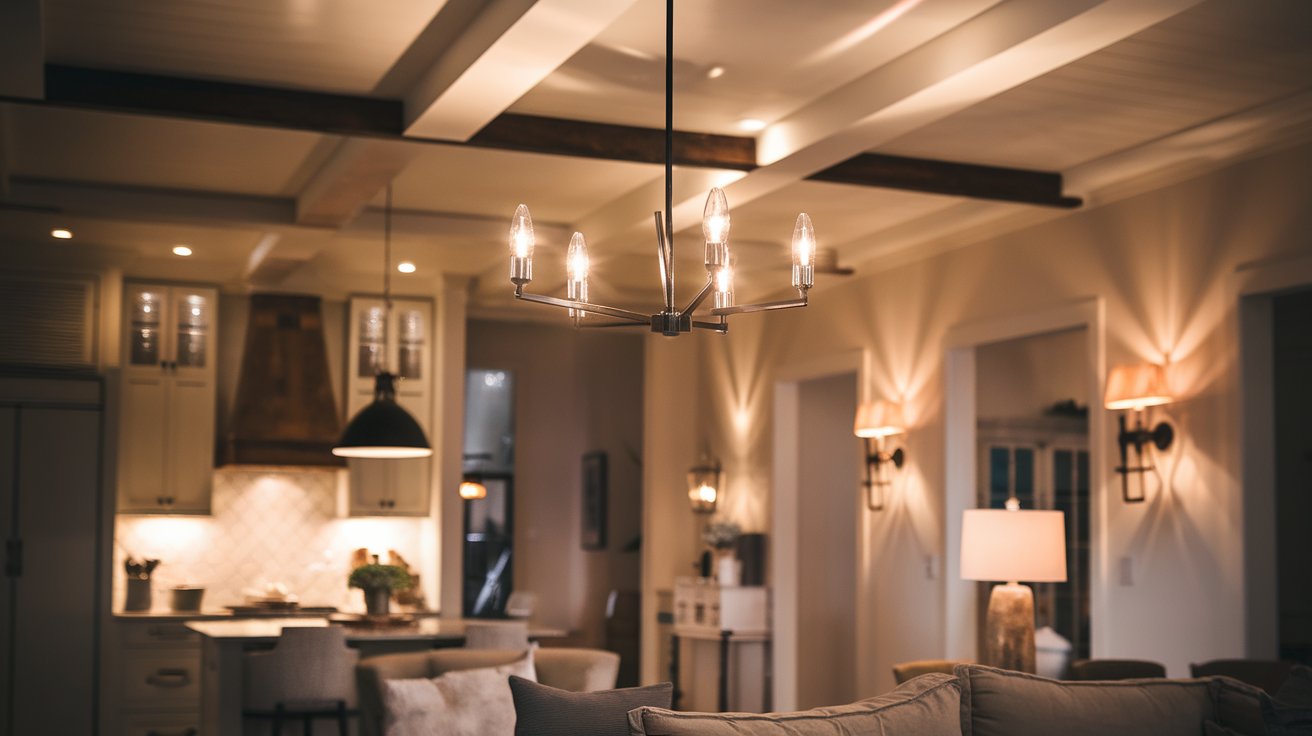Introduction
When it comes to lighting our homes, the choice of lightbulbs can significantly impact not just illumination but also energy efficiency. LED bulbs are widely favored for their long-lasting performance and lower energy consumption compared to traditional incandescent bulbs. However, many consumers are surprised to discover that these efficient light sources can feel quite hot—sometimes reaching temperatures around 181°F. This phenomenon often arises when LED bulbs are used in enclosed fixtures, where airflow is limited, causing overheating and flicker. Understanding how airflow and heat management interact with LED technology is crucial for ensuring optimal performance and safety.
The right installation can make all the difference. By choosing LED bulbs specifically designed for enclosed spaces and ensuring proper ventilation, homeowners can mitigate flicker and enhance light quality. Additionally, features like built-in heat sinks and compliance with UL safety standards help maintain lower operating temperatures, making the bulbs safer and more efficient. These considerations ensure that your lighting not only looks good but functions reliably, creating a comfortable environment at home.
Key Takeaways
Proper airflow around LED light bulbs is essential for preventing flicker and ensuring consistent lighting quality in enclosed fixtures.
Enclosed fixtures can cause LED bulbs to overheat, leading to flickering and reduced light output if airflow is restricted.
Heat sinks and UL-certified LED bulbs designed for enclosed spaces can effectively manage heat dissipation and improve performance.
Comparing LED bulbs to incandescent bulbs reveals that although LEDs may feel hot, they are still more energy-efficient and generate less overall heat.
Innovations in LED design, such as improved heat sinks, allow for brighter and more efficient lighting with reduced flicker.
Choosing the right LED bulb with proper certifications and understanding wattage and lumen ratings ensures optimal light quality and safety in your home.
The Importance of Proper Airflow Around LED Light Bulbs to Prevent Flicker
Proper airflow around LED light bulbs is essential for preventing flicker and ensuring consistent lighting quality. When LED lights are installed in enclosed fixtures, airflow can be restricted, causing the bulbs to operate at higher temperatures. This overheating can lead to flickering and a reduction in overall light output. By promoting adequate airflow, you can maintain the optimal performance of your LEDs, prolonging their lifespan and enhancing brightness. Furthermore, effective heat management helps in avoiding damage to the internal electronics, which can be sensitive to temperature fluctuations. This means your lighting will be stable and reliable, creating a more comfortable environment in your home.
Best Practices for Ensuring Proper Airflow Around LED Light Bulbs
1. Use Fixtures Designed for LED Bulbs
When choosing lighting fixtures, it’s important to opt for those designed specifically for LED bulbs. These fixtures are created to promote better airflow and manage heat dissipation. By using LED-specific fixtures, you can reduce the risk of flickering caused by overheating. These fixtures often incorporate materials and designs that enhance air circulation, ensuring that the bulbs remain cool even when used in enclosed spaces.
2. Install LED Bulbs in Well-Ventilated Spaces
Placing LED bulbs in areas with good ventilation is key to preventing overheating. Enclosed fixtures without proper airflow can trap heat, causing the bulbs to flicker or lose brightness over time. Ensuring your bulbs are installed in well-ventilated spaces helps maintain their performance and extends their lifespan. If enclosed fixtures must be used, consider installing bulbs with advanced heat sinks to manage the temperature effectively.
3. Choose LED Bulbs with Advanced Heat Management
Not all LED bulbs are created equal—some are designed with advanced heat management systems that perform better in enclosed spaces. Look for bulbs that feature built-in heat sinks or are labeled for use in semi-enclosed or fully enclosed fixtures. These bulbs are built to handle higher operating temperatures, reducing the likelihood of flicker and maintaining a steady light output.
4. Avoid Overloading Fixtures with High-Wattage Bulbs
It’s tempting to use high-wattage LED bulbs to achieve brighter lighting, but this can lead to excess heat buildup in enclosed fixtures. Overloading your fixture with bulbs that draw too much power or emit too much heat can lead to flickering and even reduce the bulb’s lifespan. Instead, opt for bulbs with the appropriate wattage that provide the needed brightness without causing overheating.
5. Monitor Bulb and Fixture Compatibility
One overlooked cause of flickering in LED bulbs is poor compatibility between the bulb and the fixture. Always check that the bulb type matches the fixture’s specifications, especially in terms of wattage and heat tolerance. This ensures that the fixture can support the bulb’s heat output, reducing the chances of flickering due to temperature regulation issues.
6. Regularly Clean and Maintain Fixtures
Dust and debris can accumulate in enclosed fixtures, blocking airflow and causing bulbs to overheat. Regularly cleaning your fixtures can help maintain proper airflow, ensuring that heat is dissipated efficiently. This small maintenance step can prevent unnecessary flickering and prolong the life of both your fixtures and LED bulbs.
Maximizing Airflow: Tips for Installation
To maximize airflow around LED light bulbs and minimize flicker, it’s essential to consider the installation environment. Ensure that fixtures allow for adequate ventilation and avoid placing LED bulbs in tight spaces where heat can accumulate. If possible, choose fixtures designed specifically for LEDs that incorporate heat management features. Additionally, using bulbs with built-in heat sinks can enhance heat dissipation, further reducing flickering and ensuring consistent lighting quality. These small adjustments during installation can make a significant difference in the long-term performance of your LED lights.
The Role of Heat Dissipation in LED Performance
Heat dissipation plays a crucial role in the performance of LED bulbs. When an LED bulb operates, it generates heat that must be effectively managed to avoid flicker and prolong its lifespan. Proper airflow helps keep the internal electronics cool, reducing the risk of overheating, which can lead to dimming or flickering. Ensuring that the heat generated by the LED is efficiently drawn away through proper ventilation or the use of specialized fixtures can help maintain a stable light output. This focus on heat management enhances the overall experience of using LED lighting in your home.
Why Do LED Light Bulbs Feel So Hot? Understanding Heat Management
LED light bulbs can sometimes feel so hot due to their design and the heat generated during operation. Although LEDs are known for being energy-efficient, they can still produce a significant amount of heat, especially when used in enclosed fixtures. This heat can impact not just the performance of the light bulb but also the safety of the surrounding area. Heat sinks are a crucial part of LED design, helping to dissipate heat away from the bulb and maintain a safer operating temperature. If a light bulb is too hot to touch, it may signal a problem with airflow or compatibility with the fixture, which can lead to flickering and reduced light quality.
Case Study: Managing LED Heat to Reduce Flicker in Enclosed Spaces
A relevant case study involves the use of LED light bulbs in enclosed porch fixtures and the challenges of managing heat. A homeowner had installed standard LED bulbs in enclosed porch lights, not realizing that the fixtures lacked proper ventilation. Over time, the bulbs began flickering and eventually failed due to heat buildup. This failure was attributed to inadequate airflow within the enclosed space, which caused the LED components to overheat, diminishing both their lifespan and performance.
Upon consulting with an electrician, the homeowner replaced the standard bulbs with enclosed-rated LED bulbs, designed specifically to handle higher temperatures. These bulbs featured built-in heat sinks and were tested for enclosed fixtures. This switch not only resolved the flickering issue but also extended the life of the bulbs, ensuring consistent light quality even in a confined space. This case highlights the importance of selecting enclosed-rated bulbs for such applications and ensuring proper airflow for heat management.
Comparing Heat Output: LED vs. Incandescent Bulbs
Understanding why LED bulbs feel so hot requires a comparison with traditional incandescent bulbs. While incandescent bulbs operate at higher temperatures, producing a significant amount of heat, LEDs are designed to be more efficient. However, if not properly managed, the heat generated by LEDs in enclosed fixtures can lead to a similar sensation of warmth. This makes it crucial for consumers to recognize that although LEDs can be hotter than expected, their overall energy consumption and heat output are significantly lower than incandescent bulbs. This comparison helps clarify the importance of heat management for optimal performance.
Innovations in LED Design for Better Heat Management
Innovations in LED design have led to the development of more efficient heat management systems. Many modern LED bulbs incorporate advanced heat sinks and materials designed to dissipate heat effectively. These design features help ensure that the bulb does not become uncomfortably hot and minimizes flickering caused by overheating. Additionally, new technologies allow for better energy conversion, meaning more light output with less heat generation. By choosing bulbs that utilize these innovations, consumers can enjoy brighter, flicker-free lighting while maintaining safety and efficiency.
How Enclosed Fixtures Affect LED Lighting Quality and Flicker Issues
Enclosed fixtures can significantly impact the performance of LED lights, often leading to flickering problems. When LEDs are placed in tight spaces, such as a semi-sealed enclosure, they can struggle to dissipate heat effectively. This not only causes the light bulb to feel hotter but also affects the stability of the power supply, which can result in flickering. To combat these issues, selecting the right LED bulb designed for use in enclosed fixtures is crucial. These specialized bulbs are built to handle higher temperatures and ensure a consistent light output, reducing the risk of disturbances in lighting quality.
The Risks of Using Standard Bulbs in Enclosed Fixtures
Using standard LED bulbs in enclosed fixtures can lead to flickering and reduced light quality due to inadequate airflow. When these bulbs are installed in tight spaces without proper ventilation, they may overheat, compromising their performance. It is essential to recognize that not all LED bulbs are designed for use in enclosed fixtures, and using them inappropriately can lead to problems such as shorter lifespans and increased energy consumption. Opting for bulbs specifically rated for enclosed fixtures helps prevent these issues and ensures consistent lighting quality.
Mitigating Flicker with Proper Fixture Choices
Choosing the right fixture can significantly mitigate flicker issues associated with enclosed spaces. Fixtures that are designed for LED use often have built-in ventilation to support better airflow. Additionally, these fixtures may include features that help regulate the temperature of the bulbs, preventing overheating. By making informed choices regarding fixture design and compatibility with LED technology, homeowners can create a lighting environment that reduces flicker and enhances overall light quality. This careful selection process contributes to a more comfortable and efficient living space.
“Overheating due to poor ventilation is a significant reason why LED light fixtures flicker. When LED lights are installed in enclosed spaces without adequate airflow, heat builds up, causing the internal components to malfunction.” – lightadviser.com
Choosing the Right LED Bulb: Enhancing Light Quality and Reducing Flicker
Selecting the right LED bulb is essential for achieving optimal light quality and minimizing flicker in your home. The current model LED light bulbs are often designed with better heat management features, allowing them to operate efficiently in various environments. When looking for quality bulbs, it’s important to consider factors such as brightness (measured in lumens) and wattage, as these will affect the overall lighting experience. Additionally, opting for bulbs with certifications such as UL can ensure that they meet safety standards and can withstand the conditions of enclosed fixtures without overheating. This thoughtful selection process helps maintain consistent lighting, making your space feel inviting and warm.
Understanding Wattage and Lumen Ratings
When choosing the right LED bulb, understanding wattage and lumen ratings is crucial for achieving optimal lighting quality. Wattage indicates the energy consumption of the bulb, while lumens measure the brightness output. Selecting a bulb with an appropriate lumen output ensures that your space is adequately lit while keeping energy use efficient. For example, a 9W LED bulb can provide similar brightness to a standard incandescent bulb while consuming significantly less energy. Knowing these ratings allows consumers to make informed choices that enhance their lighting experience.
The Importance of Certifications in LED Bulb Selection
Certifications play an essential role in ensuring the quality and safety of LED bulbs. Look for bulbs that have passed UL and other certification tests, as this guarantees they meet safety standards for heat management and performance. Certified bulbs are less likely to experience flickering or overheating, making them a safer choice for your home. Furthermore, purchasing bulbs from reputable manufacturers can provide peace of mind that you are investing in quality lighting solutions. This attention to certification helps maintain a consistent and reliable lighting experience.
Conclusion
In conclusion, ensuring proper airflow around LED light bulbs is critical for maintaining performance, safety, and reducing flicker, especially in enclosed fixtures where heat can accumulate. LED bulbs may feel hot during operation, but they remain more energy-efficient than traditional incandescent bulbs, making them a smarter choice for lighting needs at home.
To achieve optimal results, it’s important to choose LED bulbs designed for enclosed fixtures, equipped with heat sinks, and certified by UL to meet safety standards. Consider factors such as wattage, lumen ratings, and compatibility with dimmer switches to ensure consistent light quality. With advancements in efficient lighting technologies and careful attention to installation, homeowners can enjoy long-lasting, flicker-free illumination that enhances the comfort and atmosphere of their living spaces.

